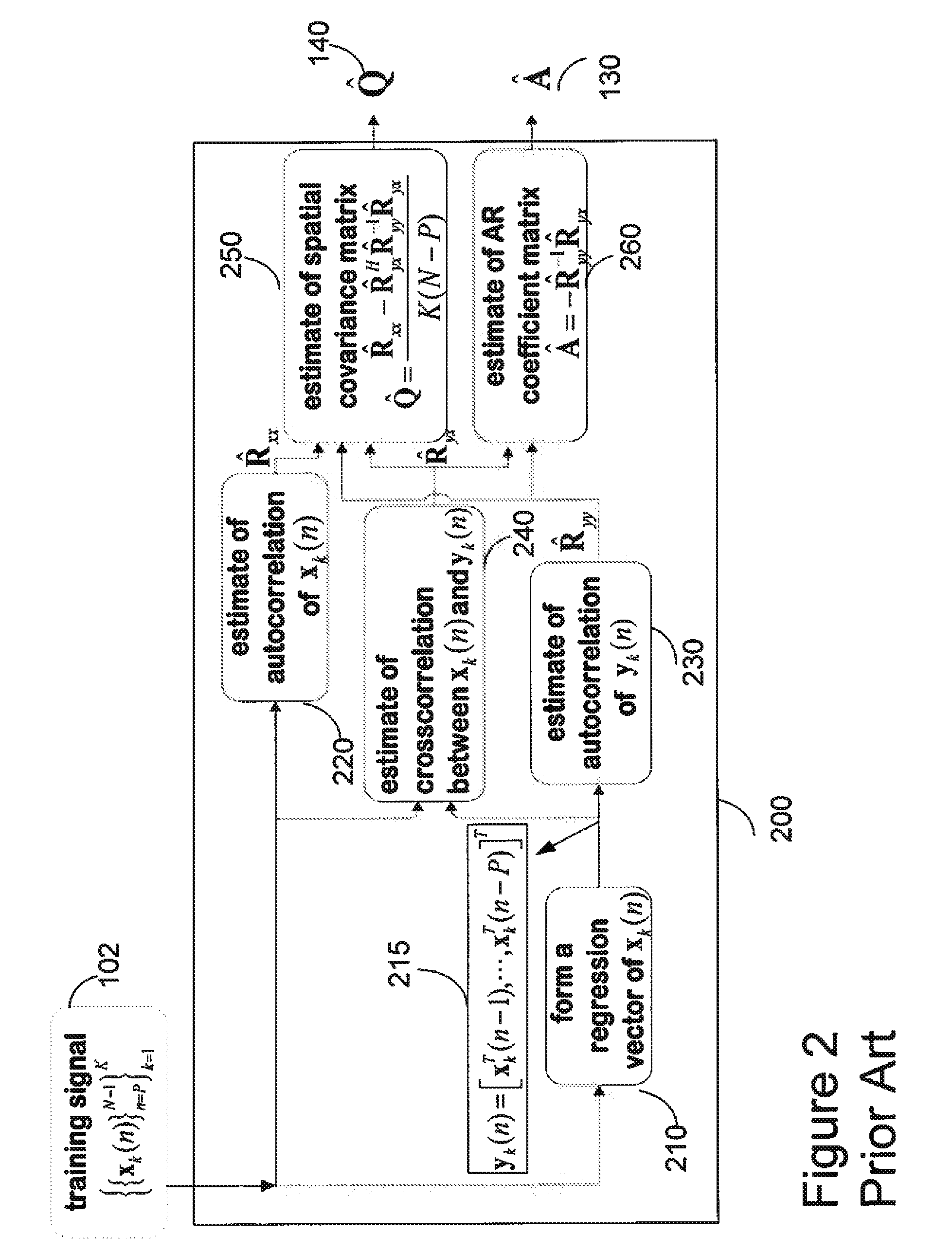Persymmetric parametric adaptive matched filters for detecting targets using space-time adaptive processing of radar signals
a technology of space-time adaptive processing and matching filters, applied in the field ofsignal processing, can solve the problems that conventional staps are not suitable for many practical applications
- Summary
- Abstract
- Description
- Claims
- Application Information
AI Technical Summary
Benefits of technology
Problems solved by technology
Method used
Image
Examples
Embodiment Construction
[0030]Overview
[0031]As shown in FIG. 3, the embodiments of our invention provide a persymmetric parametric adaptive matched filter (per-PAMF) 300 with an adaptively estimated temporal correlation matrix A 330 and an adaptively estimated spatial covariance matrix Q 340 obtained from training signals 302.
[0032]The filter can also be implemented as a method performed in a processor connected to a memory and input / output interfaces as known in the art. As can be seen the general structure of our filter 300 is similar to the conventional filter 100 shown in FIG. 1.
[0033]The AMD 300 filter can be used to detect targets using space-time adaptive processing (STAP) of test signals 301, and a generalized likelihood ratio test (GLRT).
[0034]Differences from Prior Art
[0035]The major differences are in how the matrices Q and A are estimated, and the resulting test statistic Tper-PAMF from these two matrices, compare FIGS. 2 and 4.
[0036]Method Overview
[0037]Our per-PAMF method basically has two st...
PUM
 Login to View More
Login to View More Abstract
Description
Claims
Application Information
 Login to View More
Login to View More - R&D
- Intellectual Property
- Life Sciences
- Materials
- Tech Scout
- Unparalleled Data Quality
- Higher Quality Content
- 60% Fewer Hallucinations
Browse by: Latest US Patents, China's latest patents, Technical Efficacy Thesaurus, Application Domain, Technology Topic, Popular Technical Reports.
© 2025 PatSnap. All rights reserved.Legal|Privacy policy|Modern Slavery Act Transparency Statement|Sitemap|About US| Contact US: help@patsnap.com



